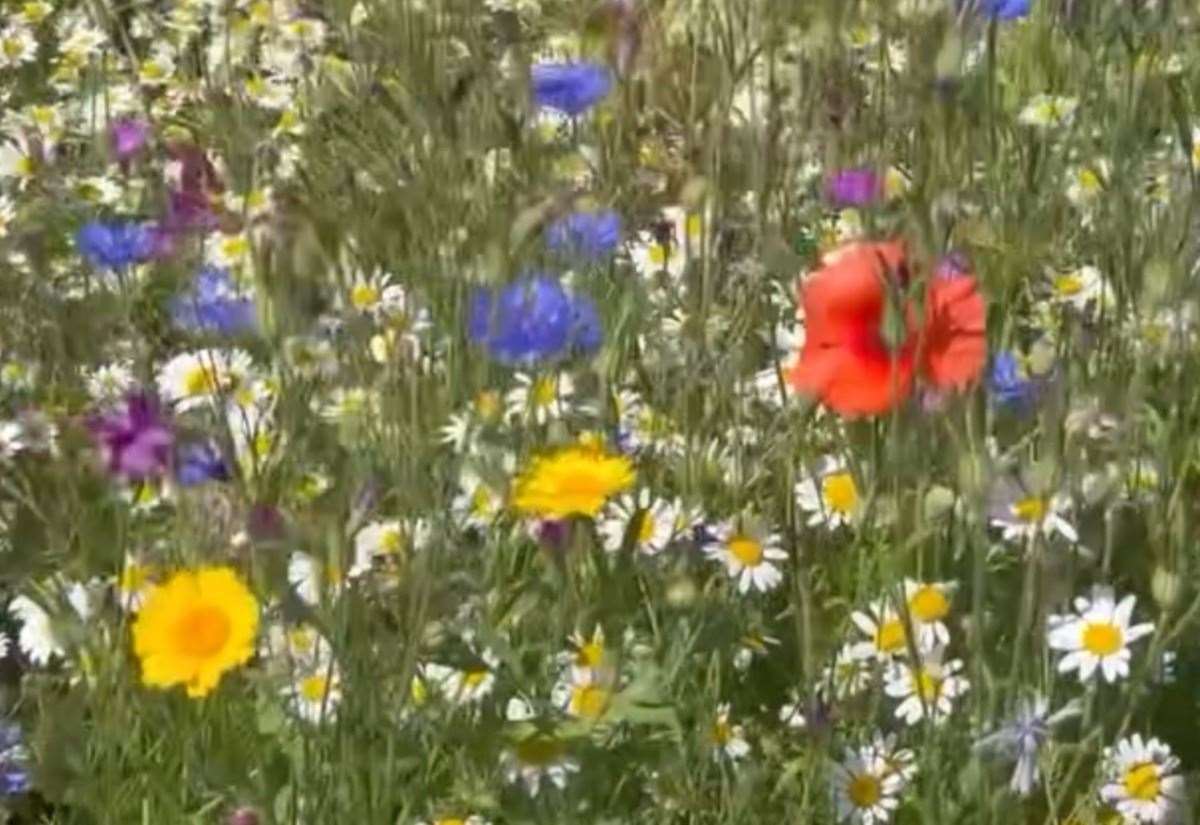In his weekly Jamie’s Little Allotment column, gardener Jamie Marsh creates his own wildflower meadow…
Wildflower meadows have been disappearing fast across the country. More than 97% of the UK’s wildflower rich meadows have vanished since the 1930s and I thought that was a real shame.
So, I decided to have a go at making my own. The majority of wildflowers like plenty of sunshine, so I thought the end of the lawn would work well, seeing as it is out in the open.
Wildflowers like plenty of sunshine
I read lots about how to start a wildflower meadow and every guide said the same thing. Wildflowers cannot compete with grass and weeds, so the first step was to get rid of those.
That first year I raked and scarified the ground until it was bare, then sowed a special bee and butterfly seed mix. It looked promising at first, but the grass and weeds soon came back and smothered the seedlings before they had a chance to get going.
So that was it for my first attempt, but I was not finished with the idea. After summer had slipped by and the leaves began to fall again, I got back into wildflower mode. I needed a way to stop the grass and weeds without using chemicals, obviously.
Jamie is having a go at creating a wildflower meadow
Then I thought, why not use the no dig method I use in the veg garden? When I make a new bed there, I put down a couple of layers of thick cardboard, with all the tape removed, and then add soil on top.
Wildflowers do not like rich compost. They prefer poor soil with very little nutrient, the total opposite of what we usually aim for with vegetables. I had been dismantling an old veg bed round the back of the plot, one I had not given much love to, just plain topsoil, perfect.
After many wheelbarrows, 42 to be exact, the new wildflower bed was ready. Another bag of the same bee and butterfly mix was cast across the bed in the most random pattern I could manage, and then I waited. You might ask why I sowed it in the autumn rather than spring.
The reason is that some of the seeds in the mix are perennial and they need a period of cold weather before they will germinate. It is called stratification, nature’s way of making sure the seed does not sprout too early. The chill of winter toughens the seed and tells it when the right time to grow has arrived.
As summer came along, the whole bed burst into life. Poppies flared red beside corn cockle, ox eye daisies, knapweed, red campion and cornflowers tangled together.
From morning to dusk, bees buried themselves in the flowers and butterflies drifted lazily through the mix. After the flowers had finished and the petals had fallen, I was left with a forest of brown stems and seed heads.
That is when the next job began. I still left seed heads for the birds in other parts of the garden, but in the wildflower bed I wanted as many seeds as possible to fall back into the soil so the display would return the following year.
I used an old sickle for the job. It was not a quick chop but a steady, satisfying swing. The motion knocked the seeds loose as I went, and once it was all down, I gave the stems a good shake and a light rake to help the seed fall through.
Then it was time to wait again. The show the following summer was not quite as good, a few bare patches, a few gaps where the grass crept back in, but that is part of it.
Wildflower meadows shift and change each year. Now I have got fresh seed heads again, so it is time for another chop. I will shake the seed back over the bed and then cut the grass short. This year I am going to scarify it again and add more seed to thicken things up.
I will also add some yellow rattle, a clever native plant that is a semi parasite. It attaches itself to the roots of grass and takes a bit of the goodness away, which weakens the grass and gives the wildflowers a fighting chance to take the lead again.
A wildflower bed does not ask for much once it is started. A simple cut and rake in autumn keeps it ticking over, and the rest is down to nature. As summer rolls round and it is buzzing again with bees and colour, it will all have been worth the effort.
You can email me at: Jamieslittleallotment@gmail.com if you have any questions
